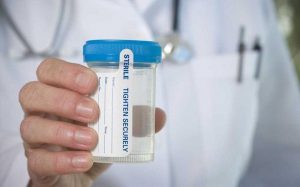Employers governed by the United States Federal Aviation Administration (FAA) are supposed to have a comprehensive drug and alcohol testing program. This includes aircraft maintenance, air carriers, and preventive maintenance operations.
Designated Employer Representatives make decisions on their aviation employer’s drug and alcohol testing program. Not only does the appointed employer representative conduct drug and alcohol tests, but they also educate employees and ensure that the drug-testing program adheres with DOT and FAA regulations.
To ensure all employees comply with required drug and alcohol testing regulations, DERs help maintains safety in the aviation industry. Below are things employers need to know about FAA Drug Testing:
1. Conduct random testing
Employers must ensure that every safety-sensitive staff is in the unplanned testing pool. This unplanned testing pool is subject to a minimum yearly testing rate, which the FAA publishes each December on its website.
For at least two years, employers must file random testing records, including the details of employees in the random pool, documentation of the testing, and the selection list. Check out the California drug testing laws for information on employment drug testing regulations.
2. Notify employees
Employers need to ensure the selected employee and the collection site are available before notifying the employee to report for testing. For each chosen staff, by the FAA Drug Test in the United States, an employer needs to document notification to that employee and include any reason to remove the employee from the list.
Small owned operations may find it helpful to outsource this process to a third-party testing administrator who can assist manage the random testing program.
3. Conduct a follow-up test
An employer may not have a return-to-duty test until written initial and follow-up evaluation reports. This comprises the substance abuse counselor’s follow-up testing plan. Before an employer allows the staff to return to duty, they should receive a negative return-to-duty test result.
According to the substance abuse professional’s recommendations, the employee should give follow-up testing.
4. Reasonable-cause drug testing
A document of the standard of reasonableness is required to order an employee to submit to testing are on each company’s policies, practices, and contractual agreements with employees and labor unions.
Additionally, federal and state laws may implement requirements on how and when reasonable cause testing in the workplace may be conducted. In most cases, a determination of reasonable cause will require direct observation and identification of an employee’s behavior, appearance, or conduct, giving rise to the observer’s suspicion.
Rumors of drug or alcohol use and “gut feelings” are not enough to justify reasonable cause testing. Employers must comply with all state and federal laws to avoid discrimination claims when conducting affordable cause testing.
Federal Department of Transportation (DOT) outlines reasonable cause testing for drug or alcohol use for covered employees, those engaged in safety-sensitive transportation-related tasks, under defined circumstances.
These rules further need supervisors or other designated employees to undergo unique training to learn the symptoms and signs associated with alcohol or drug use to be qualified to make a reasonable cause determination. The type and amount of training vary among DOT agencies.
Since the use of alcohol is legal, a reasonable cause test for alcohol use may happen only when an employee happens to be under the influence immediately before, during, or just after the performance of safety-sensitive duties.
In contrast, reasonable cause testing for suspects is when a trained observer believes an employee has used illegal drugs. When an employee suspects practical cause testing, his safety duties are relieved until the testing is over.
5. Post-accident/post-incident drug testing
Employers with workers in safety-sensitive roles interested in drug use leading to accidents may want to have a blanket post-injury drug-testing governance. This is because it is essential to ensure that workers are not influenced.
Employers’ best practices are likely to vary depending on state laws regulating workplace drug testing. But in general, employers who need to ensure their drug-testing initiative are not a deterrent for staff to report work-related injuries should consider drug testing staff whose behavior may have affected the incident. For example, employers may want to drug test only the forklift driver who runs into another employee, rather than drug testing the employee who was simply a bystander.
Conclusion
Drug testing has become a significant part of employment procedures, primarily in high-risk professions. Aviation is such of the industry, and they cannot overlook the quality of employees they hire. FAA has outlined the best set of guidelines for FAA drug testing in relation to DOT testing protocol, and this outline will give you a clear idea about the same. Employers should adhere to these guidelines set by FAA to avoid lawsuits from their employees due to illegal drug testing. Make sure you understand the guidelines before conducting drug tests.









